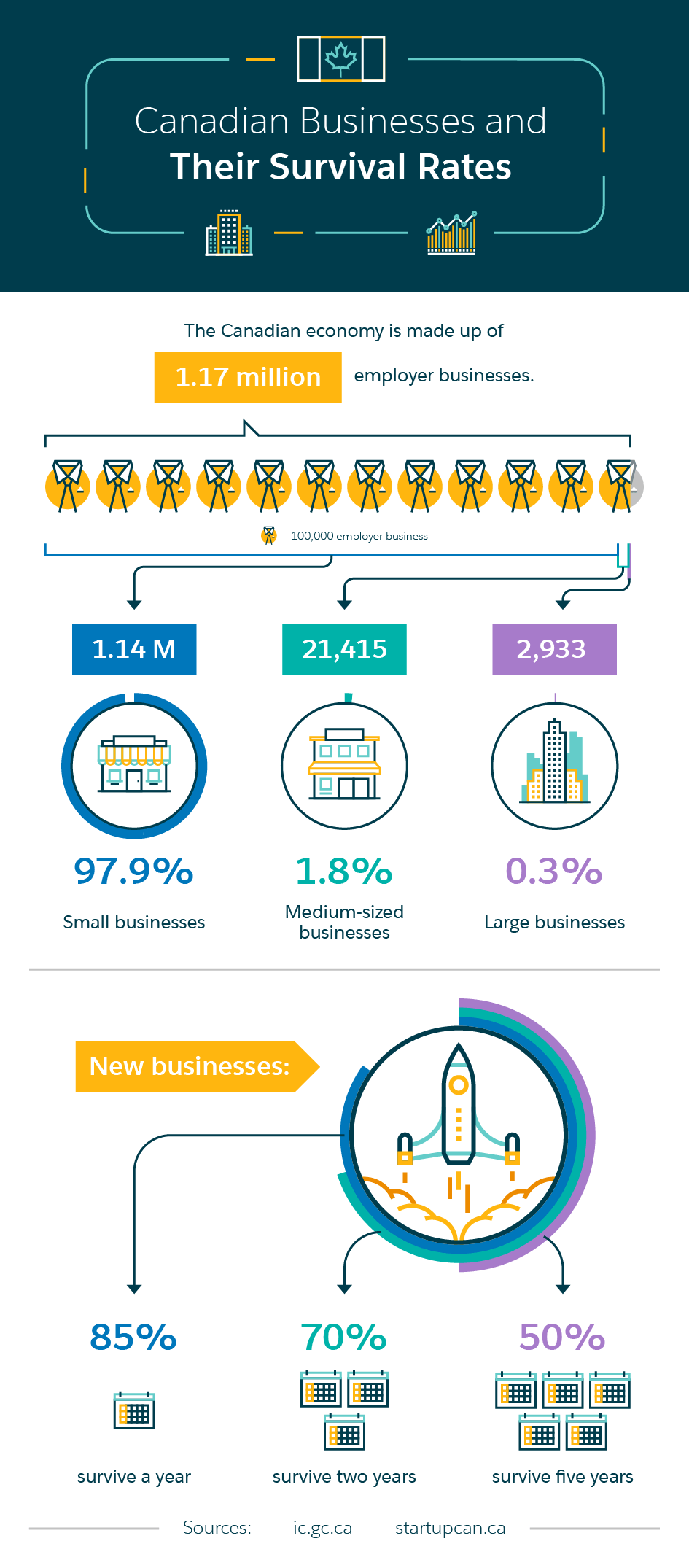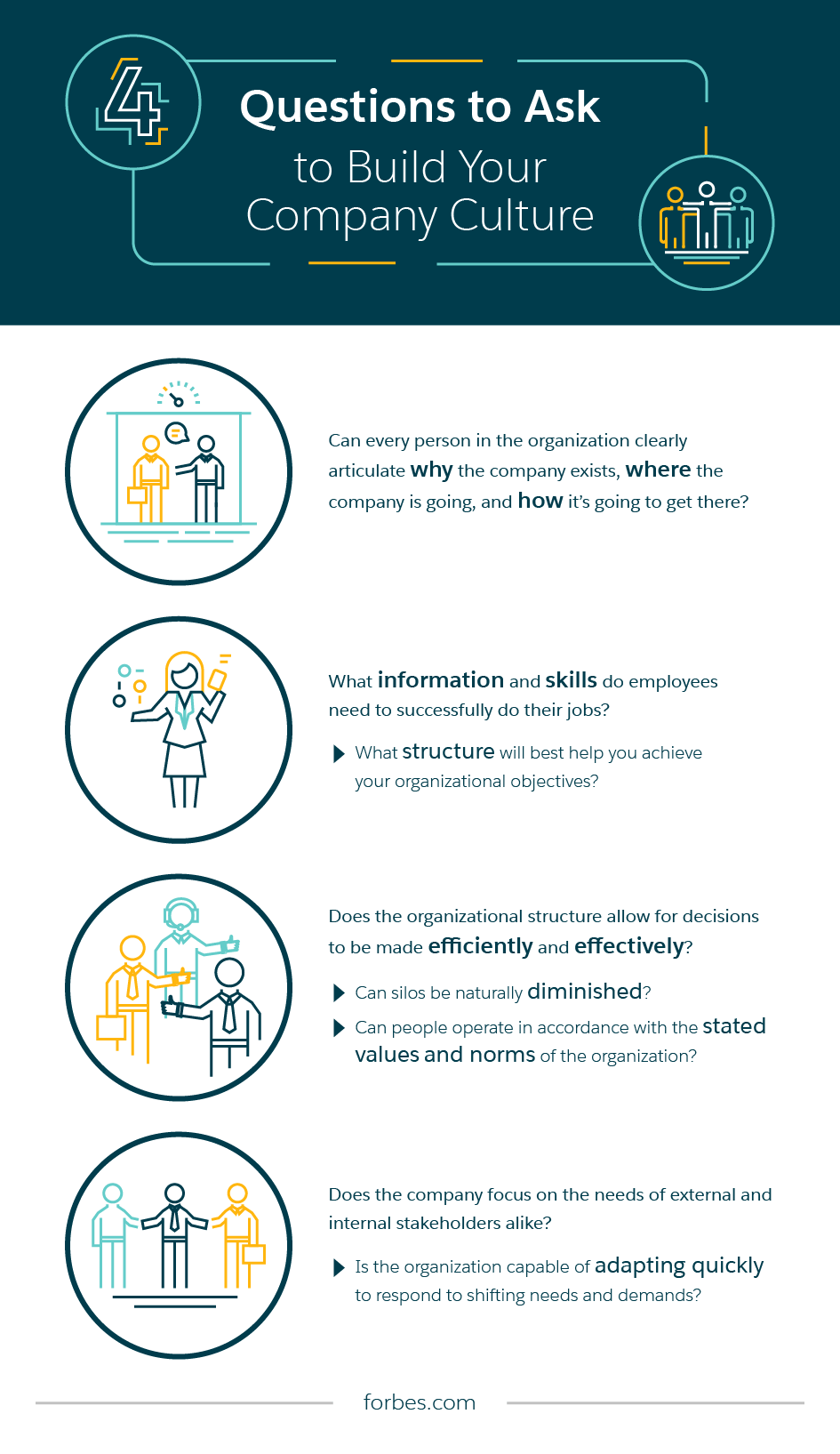According to the latest report from the Innovation, Science and Economic Development Canada office, as of December 2015, the Canadian economy totaled 1.17 million employer businesses.
- 1.14 million (97.9 per cent) were small businesses
- 21,415 (1.8 per cent) were medium-sized businesses
- 2,933 (0.3 per cent) were large businesses
In Canada, 85 per cent of new businesses survive a year, 70 per cent survive two, and just half survive five. It’s a rare startup that blooms into a large corporation, and that can take a decade or more to achieve. With this reality, savvy leaders know they need all the help they can get not just to stay afloat, but to guide their business to its full potential.
One surprising tool that may help? Maslow’s hierarchy of needs. Psychologists, business managers, teachers, nurses, and others have adapted versions of the hierarchy to help them understand patients, employees, customers, and students.
The hierarchy is also useful for understanding the needs of an organization itself. Business leaders who see the big picture can better steer the ship toward growth and self-actualization, which is the highest level of the hierarchy and the only one in which a person (or business) can achieve its potential.

What Is Maslow’s Hierarchy?
After studying human and primate behaviour, in 1943 Abraham Maslow published A Theory of Human Motivation. In it, he described human motivation in terms of which needs we choose to fulfil in order of how important they are to our survival, growth, and ability to thrive. These motivators are known today as Maslow’s hierarchy of needs.
Briefly, those needs, in the order we must fill them, are:
- Physiological needs, such as food, oxygen, water, and sleep
- Safety needs, such as security, order, stability, and protection
- Belongingness and love needs, such as family, relationships, and affections
- Esteem needs, such as responsibility, achievement, reputation, and status
- Self-actualization needs, such as fulfillment and personal growth
While there’s no “official” hierarchy of needs for business, let’s discuss Maslow’s hierarchy as interpreted for businesses.
Level 1: Existence
Some of the foundational tasks that startups attempt to complete are:
- Having a product or service to offer customers and clients
- A basic business strategy or model
- Startup funds
- Basic office space and equipment
- At least one person to do the work
At this stage, a business may be the work of a solopreneur, or what Industry Canada labels a micro-enterprise of one to four employees. These basic needs must be met either before a business can be “born,” or very shortly after. If a micro-enterprise satisfies these needs, it has the potential to gain customers.
At this level, the focus is on getting things rolling. The company may not see a profit. A new business will usually aim all efforts at simply getting some cash and customers, without taking the big picture into account.
Even at this early stage, however, successful startups must begin creating a great marketing strategy to move forward. Many failed startups cite a lack of market need for their products as the reason they went out of business. To avoid this pitfall, in the earliest stages of a new business, experienced entrepreneurs tailor products and services to satisfy a specific customer. Those that don’t may last just a few months. Those that do can fuel forward momentum for several years and lay the groundwork for achieving level two needs.

Level 2: Sustainable Business
- A steady revenue stream
- A healthy customer retention rate
- Multiple employees
- Technology systems
Once level one needs are met, a startup has a foothold in the market and may see those first profitable dollars roll in. Now the company can begin growing, but only if it funnels these initial profits back into the company to strengthen its tenuous hold on the market. To do that, companies start hiring more employees. Leaders who have “worn many hats” will hire workers with specialized skills to take on key roles within the company. Success-bound companies may begin establishing a more rigid employee hierarchy and creating separate departments.
Businesses in level two will also begin making more sophisticated financial transactions, such as investing in company infrastructure or real estate, and meeting additional regulatory demands that come with them. Their growth will likely require more reporting, which means the company may need to invest in new systems to stay organized and efficient.
At this stage, many startups switch from being product-based businesses to focusing more on the customer. They realize they need not only more customers, but more loyal customers, since it’s less costly to upsell an existing customer than it is to earn a new one. Marketing strategies become more layered as the company segments its audience with targeted messaging that discusses various value propositions.
The danger at this stage is uncontrolled growth that eventually pops, similar to the dotcom bubble of the late 1990s. Revenue fails to support new infrastructure and labour costs. To stay on top of it all in a cost-effective way, successful businesses turn to technology that includes customer relationship management (CRM) systems.
Level 3: Building Relationships
- Investors
- Long-term clients
- Defined employee relations and an established company culture
While striving to satisfy level two needs, businesses will start relationships with customers and employees. The next challenge will be maintaining and growing them. Keeping employees engaged and loyal, for example, may become more challenging as more talent is hired. Furthermore, as a company adds new staff and departments, the need for more management grows.
It is at this stage where a divide may be felt between in-the-trenches workers and those steering the ship. Employees may feel more loyalty to their immediate superiors than to the company, so nurturing those relationships is critical to success. According to a study by The Conference Board of Canada, only 27 per cent of workers are engaged at work. Therefore, establishing an attractive and supportive company culture is critical.
Successful businesses focus on deepening employee, customer, and partner relationships. Powered by a robust CRM platform, they include personal touches in their interactions with customers and internal contacts. They develop key account management policies. Those that don’t will struggle to maintain these relationships over time.

Level 4: Making a Name
- Brand recognition
- Partnerships
- Press coverage
- Initial Public Offering (IPO)
Once a company can successfully build relationships, the next hurdle becomes making a name for the brand in an even larger community. This could be a regional community at first, but may grow to encompass national or global brand recognition. By this time, companies have proven they have a viable business model and policies, and level four needs are more about how to share that with the rest of the world.
Mergers, partnerships, and going public are all common milestones for level four companies, and an increased focus on public relations is critical. These companies do large marketing pushes to increase brand recognition, seek out press coverage, create large-scale media efforts such as television ads, or invest in extensive thought leadership-based content marketing. With more brand awareness comes a greater susceptibility to public criticism, particularly because social media is a part of the everyday life of a consumer (71 per cent of Canadians are on Facebook alone).
Relatively few businesses achieve level four, and not all are meant to. These are businesses that are household names, perhaps with products that have infiltrated language itself, such as Kleenex and Coke. Companies in this stage have made getting the right brand messaging out mission critical. Leaders of companies seeking to attain level four needs will increasingly require management to handle not just daily operations, but operational decision making so they can focus on big-picture business strategy instead.
Level 5: Self-Actualization
- Corporate citizenship
- Corporate social responsibility
- Giving back
The final level of the business Maslow hierarchy of needs is achieved when the purpose of the company transcends business itself to tackle social or environmental causes.
Many companies give back to their local communities or donate to charities before this level of fulfillment. For some, social responsibility is part of their strategy for staying competitive in the market by building a reputation as a company with a moral compass.
Level five is far less about being recognized for good works and more about re-aligning company values from the ground up toward making the world a better place. As Carol Cone, the Global Chairwoman of Business + Social Purpose at Edelman, puts it, “It’s not about philanthropy. It’s about finding the intersection between what a company does really well, and where there’s a social need — and coming together.” In other words, it’s about fulfilling the needs of others.
How to Get from Survival to Self-Actualization
Maslow considered the first four levels of his hierarchy “deficiency needs,” meaning that without them, people become anxious. The fifth level, self-actualization, can only be achieved when this anxiousness is calmed by attainment of lower level needs. He called five the “growth level” because it was the one in which a person could achieve their fullest potential.
As with humans, a business’ path along the hierarchy may be interrupted by, or circular due to, a need to continue to meet lower level needs. This could be the result of a downturn in the economy, for example, or a crisis that delays a company from creating new partnerships.
Maslow estimated that around one per cent of humans achieve this highest level of fulfillment. The number of corporations that reach this level may be even lower. How can companies keep moving toward self-actualization?
Understanding the hierarchy of business needs is a great start. Keeping it in mind when building and running a business is also critical. Successful companies will invest in systems and technologies that will help them achieve each level before reaching for the next one, and they aren’t afraid to shift focus, circle back, and satisfy lower-level needs when necessary.
Take your sales team to the next level with our ebook, “5 Secrets of the Most Productive Salespeople.”
Share "From Survival to Self-Actualization: The Business Hierarchy of Needs" On Your Site




